The Colours, Atmosphere, and Mood of Shakespeare’s Richard II
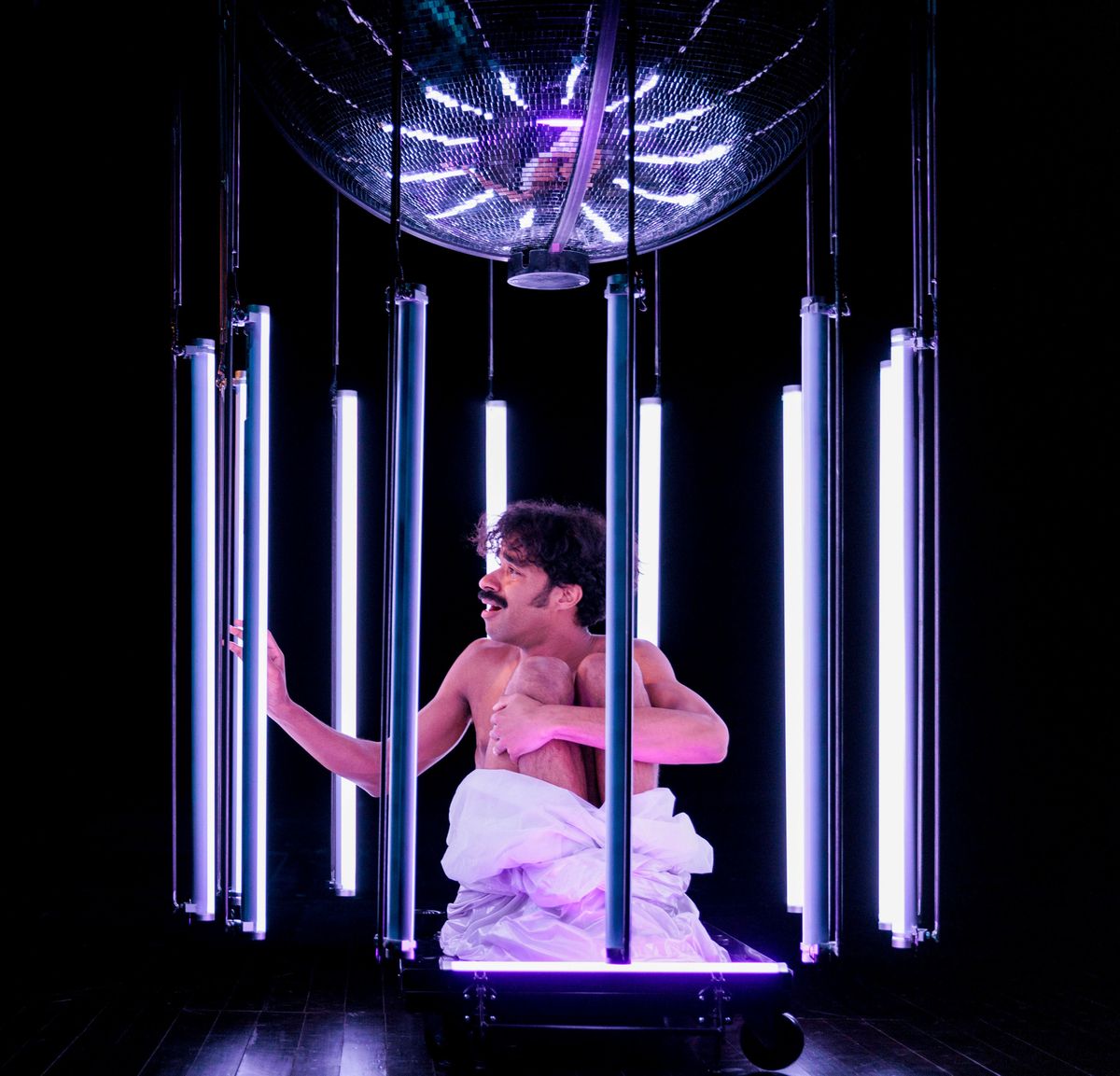
By Manus Hopkins
Photos by David Hou
A new spin on William Shakespeare’s acclaimed Richard II, adapted by Canadian playwright and provocateur Brad Fraser, hit the Tom Patterson Theatre as part of the 2023 Stratford Festival in Stratford, ON last summer. The play was conceived and directed by Jillian Keiley, choreographed by Cameron Carver, and lit by Leigh Ann Vardy with 12 x Astera Titan Tubes and four Helios Tubes.
We caught up with Keiley and Vardy while the production was in full swing to get the scoop on how everything came together and how the shows were going.
Jillian Keiley, Director
PLS: How did you get involved in this production and why was it an opportunity you wanted to take?
Keiley: I've worked for Stratford before, and they have some really, really great, really exciting artists who work there and artisans who put things together. I always jump at the opportunity to work with Stratford when I can. This particular play was really interesting to me because it’s traditionally a very difficult play. It's all in verse. A lot of Shakespeares go from verse to prose, but this one pretty much rhymes the whole time. It sounds facile, but it's really not; it's quite complex and beautiful. And I was trying to figure out what to do with the show. I knew I was
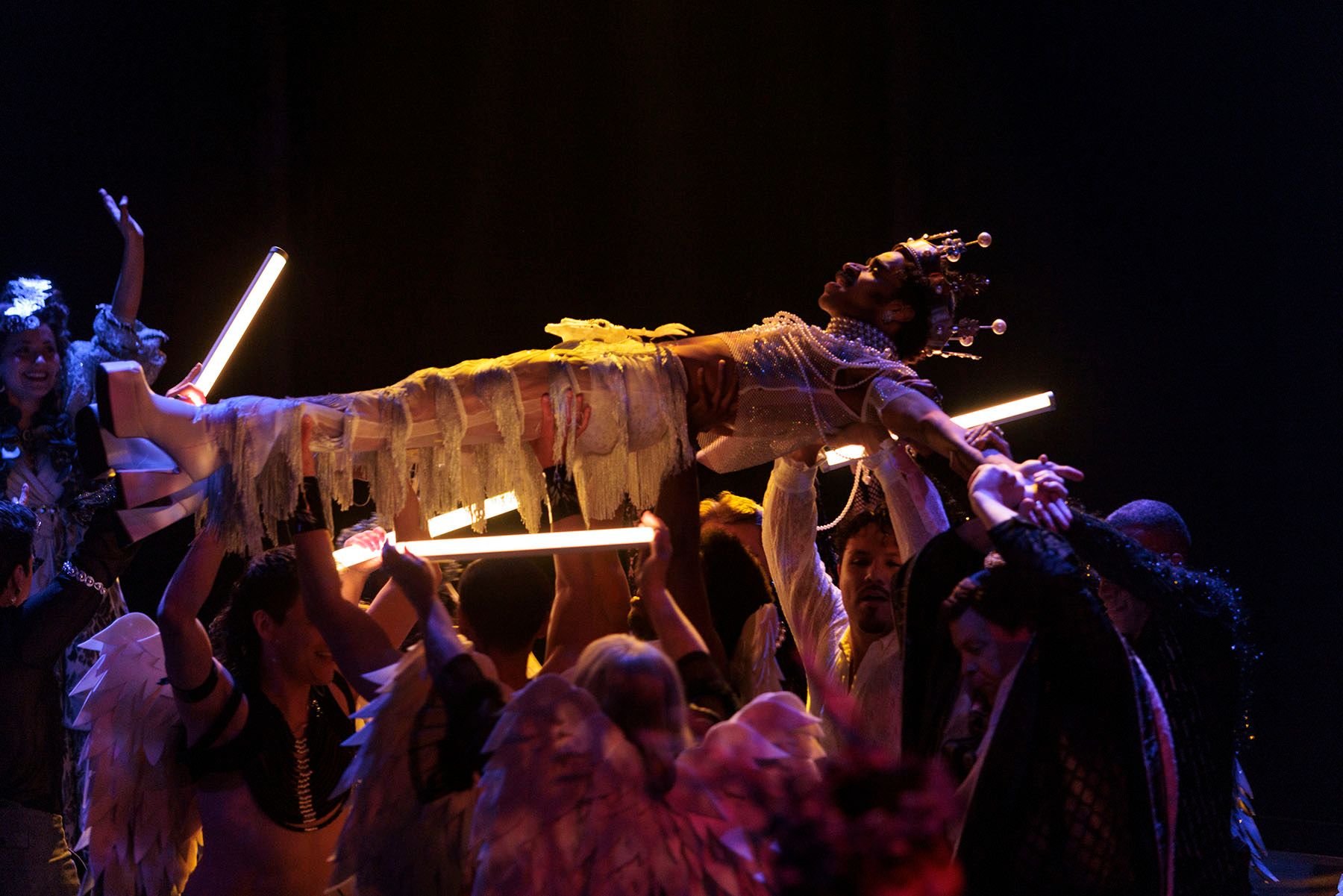
interested in it. And I was interested in the challenge. And I was interested in the character because the lead character, or the person that the play is named after, anyway, is Richard II, who was a king who was, in the Shakespeare anyway, quite vain, and, and really powerful. But his flaw was that he was quite vain and really powerful. And I'm really interested in people's relationship with God. And he really believed that God was on his side, he really believed that he couldn't lose. And I think we see people in current politics and that kind of thing, even in our own lives, who really believe that they're somehow more special than everybody else. We see it in individual people, we see it in full cultures, we see it in white supremacy, we see it in colonialism, that there are people who believe that for whatever reason, they're chosen by God, to change the rest of the world to be more like them. And I think this king did want to change the world to be more like him and was quite content to do that. And of course, then he finds out that God actually doesn't really have a lot of time to be thinking about that kind of thing. He's interested in a lot of things. And he's not thinking about this guy at all. So, I think that that was the story I really wanted to tell. And the pathos of that, the sadness of that, and the sadness that all of us, whether you were born with religion or not, or brought up in religion or not, that all of us believe somehow that we are here for something greater. And then the kind of surprise, I suppose that even somebody as powerful as Taylor Swift or as powerful as Lizzo, or as powerful as Donald Trump, even they end up having a minuscule impact in the end, because the collective is so much stronger than the individual. So, I really wanted to speak to that. And I thought Richard II would be a great way to speak to it.
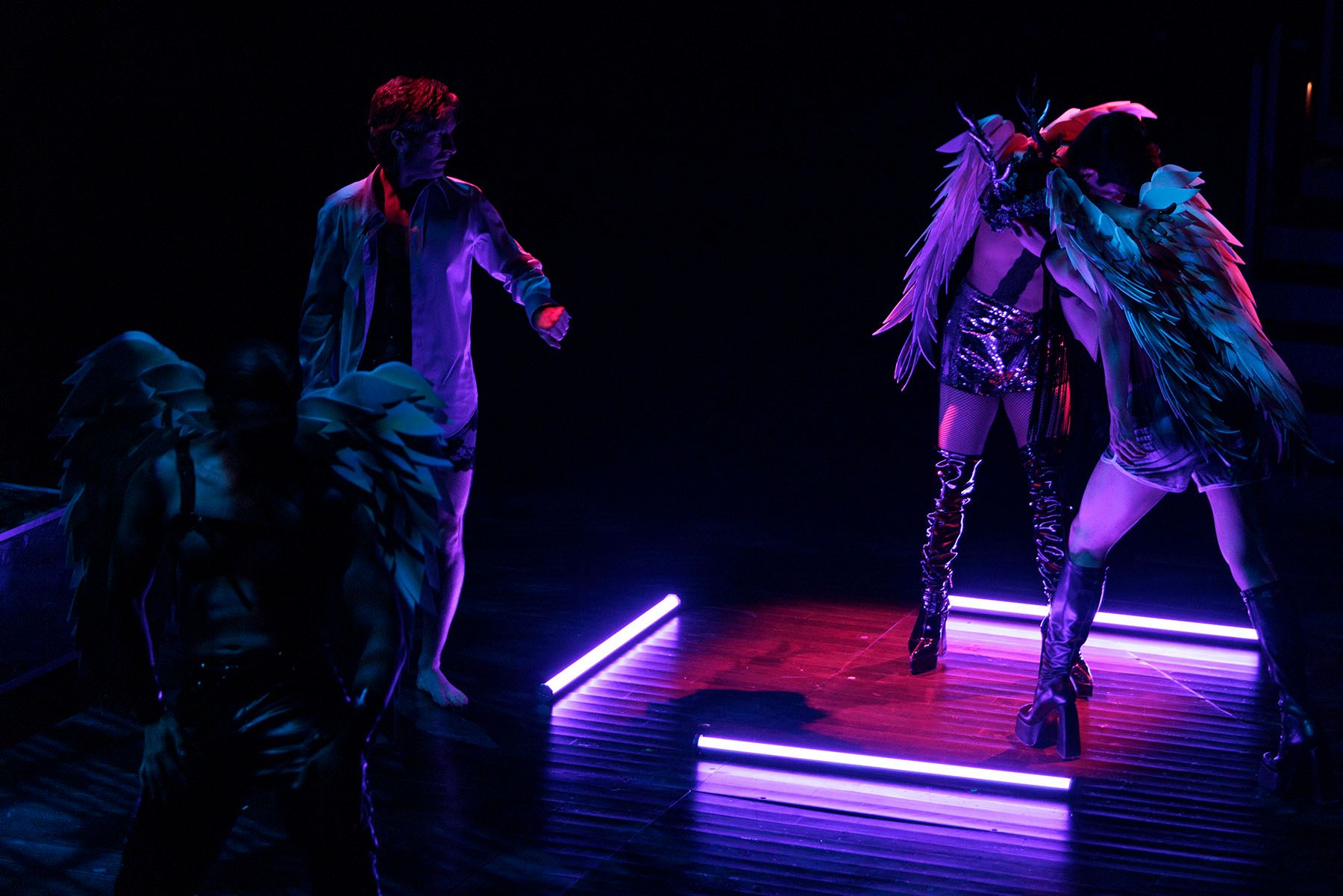
PLS: Tell me about the themes of this play and how the visuals contributed to them.
Keiley: We wanted to set it in the disco era, because I wanted to put it there in particular because I had read a book by Brad Fraser called All the Rage. He ended up doing this adaptation of the script for me because he's a great playwright and he was a big gay revolutionary in his day, which was in the late ‘80s and ‘90s. And he kind of brought Queer Theatre, though it wasn't called Queer Theatre at the time, it was called gay theatre, to the forefront in the late 1980s. All of his friends were getting AIDS and he wasn't. He was sleeping with everybody, total sexual freedom. This is his own memoir from his life in that late disco era, and Studio 54, that era. And I was like, ‘Brad, do you think you could adapt this story, this play to your time?’ because one of the things that happened was there was all this freedom and everybody believed that they were kind of special in the ‘70s, and then AIDS came and everybody was scared again and fundamentalism came and the hard right came with it. You're being punished for your looseness and freedom.
What we see in Richard II also is a conservative king who comes in and squishes the more free and careless in a way, Richard, so that’s what we see between those two worlds. Of course, we continue to see liberals and conservatives fight it out in extremely polarizing ways as we go, and this is again, Shakespeare's writing about something that we cannot seem to free ourselves of. So, that's why I wanted to set it in that time. When we built our set, I worked with Michael Gianfrancesco, who was brilliant, and Leigh Ann Vardy, who is the lighting designer. Don Ellis did sound and Rhapsodius composed all this amazing disco music. And what I wanted to do to tell the story was use dance because disco was an era that was primarily about dance. The main communication tool was dance. I hired this extremely good choreographer named Cameron Carver and he choreographed all this incredible dance to go with the show. We invented a chorus of angels who would dance with Richard for the show. And so, we had this beautiful chorus of dancers all dressed as angels.
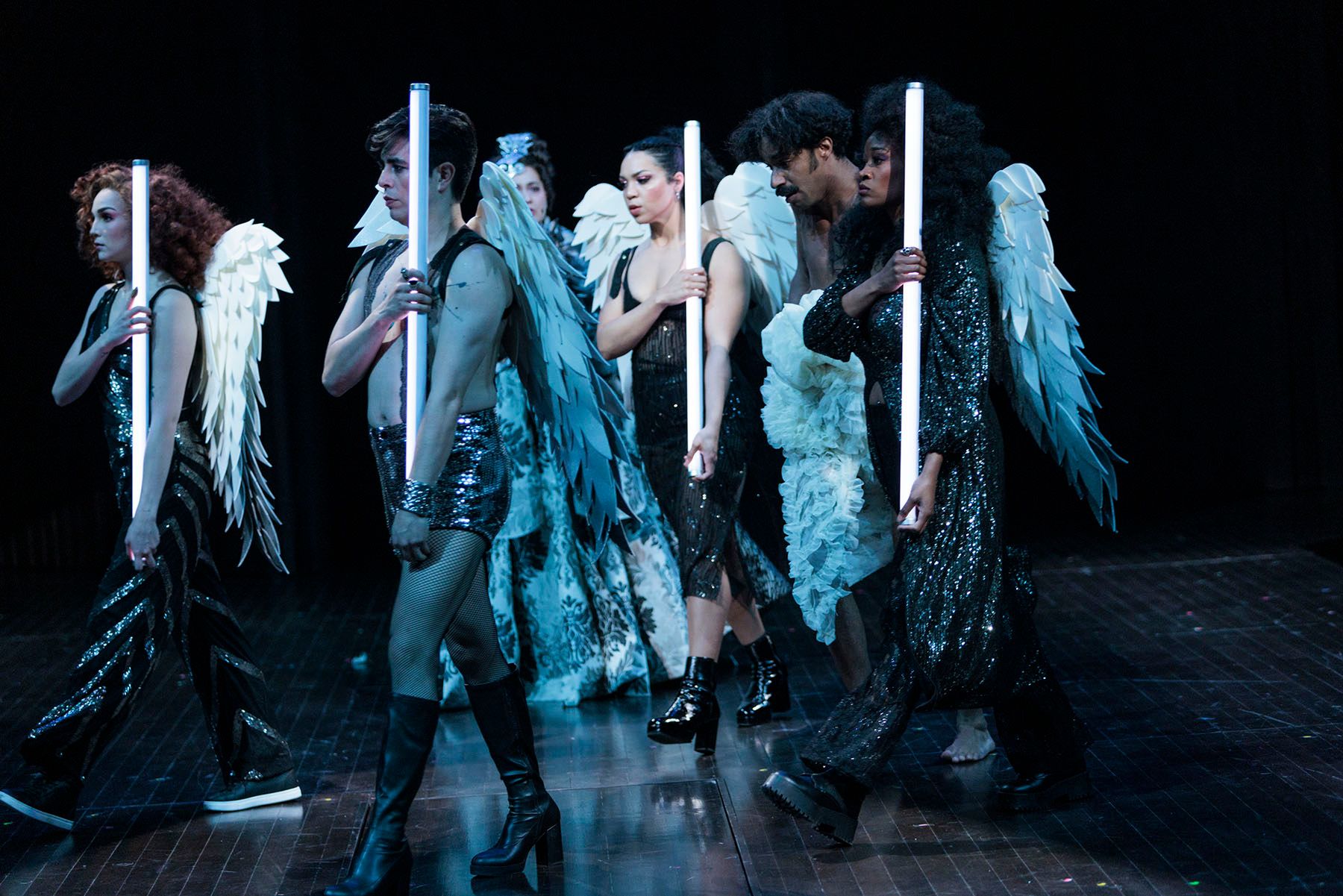
The set, of course is very sparse, because we're on the Tom Patterson stage, which is a long thrust, a three-quarter thrust all the way around. It's shaped like a coffin. And this set was just these maybe six boxes plated with mirror. Part of the set and lighting were the lighting tubes that were really indispensable to the set design and lighting design, very beautiful things. The tubes we used to set up outlines of places on the floor, we used them to light people. They're just a beautiful, sharp statement in the show. Everything is really spun out of that 1970s aesthetic: the invention of fluorescent tubes was really happening at that time. Now, the Astera units are not fluorescent tubes; they operate in a different way. They're operated from the lighting board. So, we could change colour quite easily and quickly. And they can be very, very dramatic. They really did everything we wanted in the end. We were really pleased with them and the crew at Stratford built a kind of shelter for them that made them super tough. So, we were able to engage with them more in a way—but we didn't throw them around or anything.
Leigh Ann Vardy, Lighting
PLS: Tell me about your background and what drew you into theatre lighting.
Vardy: I grew up in western Newfoundland and had access to theatre from a very young age. I loved it as a kid and hung out at the local Arts and Culture Centre backstage while my parents helped out with shows. I didn’t understand until years later that my father was actually helping with the lighting set ups for a group called Playmakers. I guess it was in my blood, but I didn’t know it at the time. I became interested in theatre design because of the mix of artistic and technical skills required. I was interested in visual art but didn’t see myself as a solo artist. I wanted collaboration. I was drawn to stories and the ways people tell them. I went to study set design at Dalhousie University, and part of the program at the time was the students could work crew at the theatre in the Arts Centre, The James Dunn Theatre. It was a roadhouse when there were no student productions happening, so we got first-hand experience with incoming professional shows. Most of the shows coming in were dance shows from Quebec and I was blown away by the lighting designs. I couldn’t believe what these designers were able do in the space. The companies often traveled with minimal sets, so lighting design was woven into the dances. I switched my attention to lighting and never looked back.
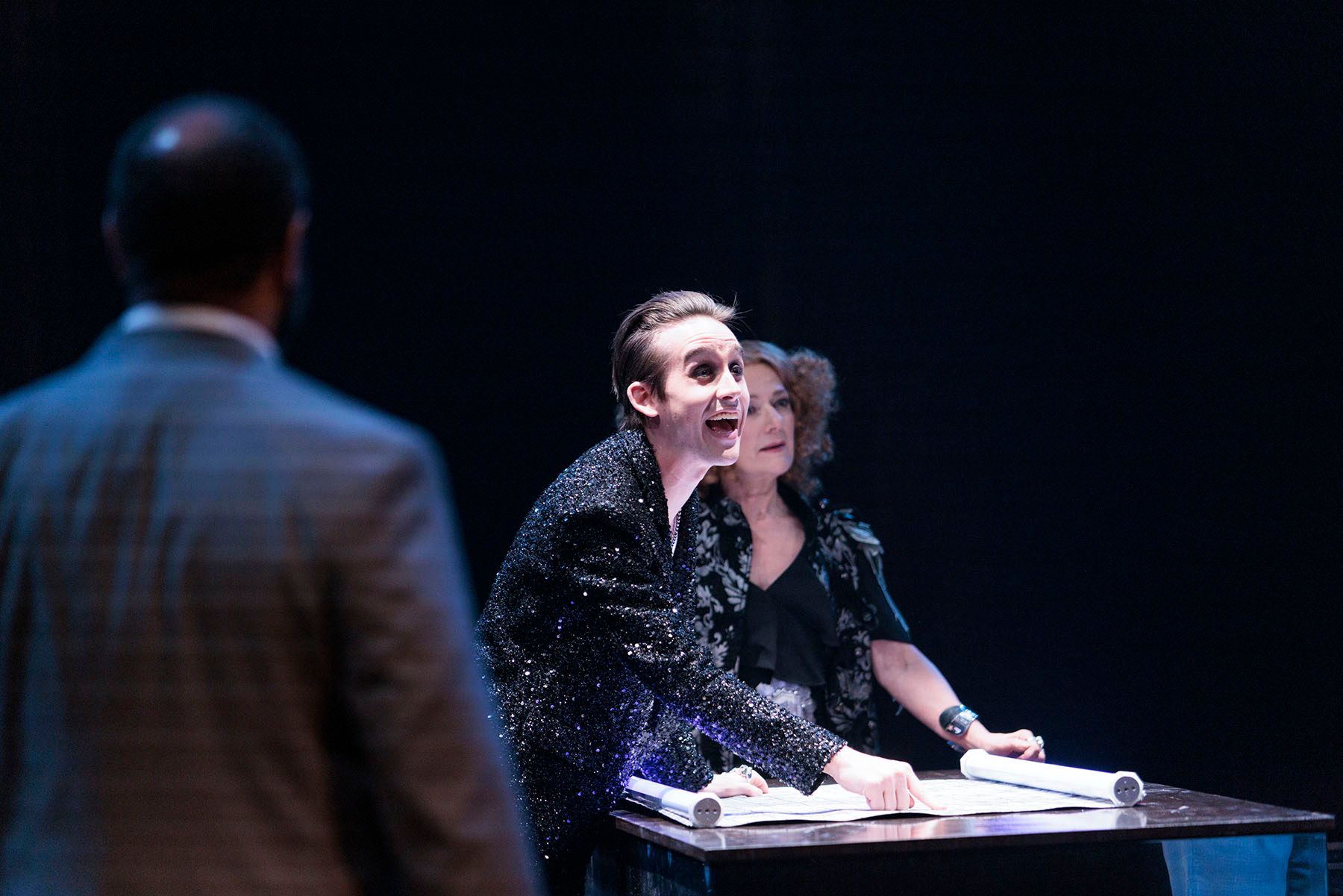
PLS: What does your role in this production consist of?
Vardy: In all productions I work on, I consider myself one of the story tellers. In early conversations with Jillian and the rest of the creative team, it was clear that lighting would be integral to accomplishing the audacious vision of this adaptation of Richard II. My role was to find ways to keep the world electric, sexy, dangerous, sacred, profane, all within the blink of an eye.
This adaptation of Richard II by Brad Fraser is set in the 1980s in the world of Studio 54 New York. It takes place at the tail end of disco and the beginning shadows of AIDS, a very powerful time and place. Richard believed his power came from the divine, and we wanted to support that feeling of divine leader in design. We had a chorus of angels onstage throughout the show that we kept in ethereal qualities of light, pulling them in and out of the visual landscape as needed.
PLS: How do the colours and effects of the lighting design match and reflect the show's content? What were some inspirations behind it?
Vardy: I drew much inspiration from the world of Studio 54. I didn’t try to re-create the actual look of the club, I was more interested in capturing the feel of it, the movement and colours, the rhythm of bodies moving. I was inspired by the dance floor in Saturday Night Fever, the pattern of squares of coloured light, so I used moving lights to create a pattern of sharp-edged squares that I could pulse and change colours and live move to follow the choreography. Cameron Carver, the choreographer, and I spent a lot of time talking through the moments of choreography in a few of the larger dance sections of the show, and we created lighting sequences that supported the movement and the story of each beat.
It was important to me to keep the audience’s eye drawn where we wanted. The beautiful Tom Patterson stage is very long, and there are audiences on three sides, and with our very large cast of characters and angels we wanted to help guide our audiences to where to be focussing attention. Michael Gianfrancesco’s stunning set included mirrored boxes that moved around the stage to help create locations and give height when we wanted it. We used lighting to delineate areas of the stage, even outlining rooms and corridors with tiny lines of light created by framing moving lights. In one scene, an art gallery, the angels created three ’sculptures’ with their bodies at various places on stage. When we bring lights up on the first sculpture, I used the lines of light to outline the area just around the artwork and filled in with some scene light. The characters played the scene around that sculpture and then when they went to move to the next sculpture the lines of light reconfigured as they followed them, creating a new outline around the next sculpture.
Part of the design was LED wireless light tubes from Astera. We used the Helios and Titan tubes throughout the show in various ways. In the club scenes the angels held the tubes as dance props. We had a scene in a bath house where the tubes were laid on the floor to create the floor plans of each room, and as the main character in the scene entered each room the lights would intensify and change color. The whole scene was lit mostly with the Astera tubes to create the outline of the walls and moving lights filling in the shapes created with different colours. These tubes were also used to create the prison that Richard is kept in. As he’s dragged onstage the giant disco ball is lowered in almost to the deck and the angels attach the light sticks to the outside diameter, creating jail bars and Richard arrives under it.
PLS: Finally, what were the biggest challenges to overcome and what are the most enjoyable parts of working on Richard II?
Vardy: I would say the biggest challenge in lighting the show was time. On a show like this with over 600 light cues and many moving pieces you need the time to make it happen. My team and I spent every second given to us, as well as doing some programming offline. As a designer I always want to be in the theatre programming, but for some of the effects we could be offsite. Aside from the time pressure there was the challenge of how to execute some of the more complex sequences. Our genius Stage Manager, Brian Scott, was keen to call even the most busy sequences of the show, but there were some sections that we needed sound to trigger because the cues had to happen within specific rapid-fire beats of music. Deciding what to send through OSC to sound and what to give Brian control over calling took us a while to figure out.
The most enjoyable part of working on Richard II was absolutely the collaboration with the creative team. Jillian Keiley and I have worked together on many shows, and I just love the way she works. She brings out the best in her whole team, challenges us to be the very best we can be, and creates a joyful and creative room for us to work in. We had a top-notch cast of some of the most talented performers in the country. Our costume designer, Bretta Garecke, is a phenomenal talent. She, Michael G and I found a visual language for the show, through much collaboration with Jillian and Cameron, and I think the end result is a strong vision for this adaptation.
Equipment List:
- 80 conventional Source 4 Lekos
- 100 Lustrs
Moving Lights:
- 9 High End Systems Sola Theatre
- 7 VL1100 Tungsten ERS
- 4 Robe T1
Other:
- 12 Astera Titan LED tubes
- 4 Astera Helios LED tubes
- hazer
Manus Hopkins is a freelance writer based in Toronto.
He can be reached at manus.hopkins@torontomu.ca
